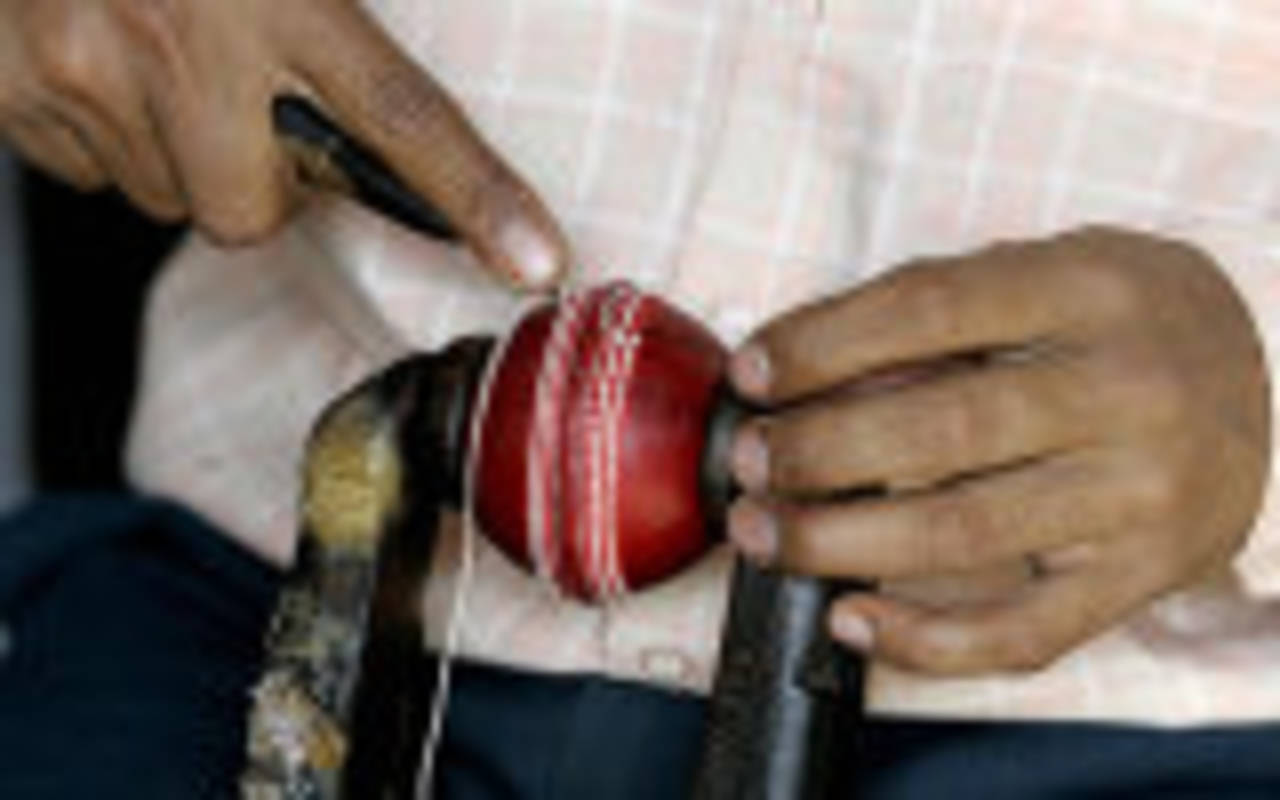Decoding the SG and Kookaburra
Aakash Chopra
25-Feb-2013

'The SG Test ball doesn't swing much when it's new' • AFP
Dear readers,
A couple of years ago the BCCI decided to use Kookaburra balls in the Duleep Trophy to give our domestic players a feel of this type of ball, as at the international level, except for the Test cricket played in India and England, this ball is commonly used.
We, in India, use the SG Test ball and England plays with either a Duke or a Readers ball (these two are quite similar to the SG Test balls used in India). But even that is restricted only to the red balls because the shorter formats all over the world are played with the white Kookaburra ball.
It was exactly the same in the Indian domestic circuit till the introduction of the Kookaburra ball for the Duleep Trophy. The longer format, before this move, was played with the SG Test ball and the one-day matches with the white Kookaburra ball.
Every time the Indian team tours overseas we hear a lot about the difficulty our players face in getting used to the Kookaburra ball in the Test matches. One might just wonder what the fuss is all about. After all it's the same leather ball; the size, shape and the weight are exactly the same, regardless of the brand. All this is true, but let me assure you that there's a huge difference in the way different balls behave in the air and off the surface.
I'll start with the SG Test ball first, which has a more pronounced seam and which remains pronounced for almost the entire length of the innings. The pronounced seam helps the faster bowlers release the ball in an upright seam position, as it doesn't wobble much after the release, and it helps the spinners grip the ball better and also get purchase off the pitch because the seam enables the ball to grip the surface.
The SG Test ball doesn't swing much when it's new but as soon as one side (half) of the ball becomes shinier than the other, it starts swinging appreciably. The good thing for the bowlers is that the shine lasts longer and hence helps both the quicker bowlers as well as the slower ones. The quicker men get swing in the air and the slower bowlers get the essential drift.
Though the Kookaburra ball also has a pronounced seam, it fades away rather quickly. The new ball does all kinds of things in the air and off the surface but once the seam gets embedded in the surface (which happens too quickly for the bowlers' liking), it ceases to move quite as much. The lack of a pronounced seam not only makes it difficult for spinners to grip the ball but it also denies them purchase off the surface because the ball, instead of gripping the turf, just skids along. Finger spinners are the worst hit in this case and hence have to put a lot of revolutions (we call it work) on the ball to get something off the track. Wrist spinners face no such problem as they don't rely on the seam to grip the surface to get the desired amount of spin. One can always put more work on the ball with the wrist as compared to the fingers.
Now, there's a particular way to bowl with different balls. The faster bowlers who release the ball instead of hitting the deck are fairly successful with the SG Test ball. Since the shine stays for longer and so does the pronounced seam, the ball swings and seams the whole day if one can release the ball with an upright seam on a regular basis.
On the contrary, the Kookaburra ball doesn't swing even half as much once it gets old. One must hit the surface hard to get something out of it. The typical swing bowlers are easy picking as the ball doesn't do much in the air or off the surface once it loses its shine.
In this blog, I've tried to explain the basic difference in the two different brands of balls used in Indian cricket. Now, how much of it has helped i.e. has it helped and how is it handled at the ground level... I shall tell you some interesting facts and tales about that in the next post.
Till then, goodbye.
P.S. I wanted to share a small detail with you guys. The reviews of my book Beyond the Blues are out and the initial signs are very encouraging, almost all of them have written good things about the book. I'm assuming that it's true. Tx.
Former India opener Aakash Chopra is the author of Out of the Blue, an account of Rajasthan's 2010-11 Ranji Trophy victory. His website is here and his Twitter feed here